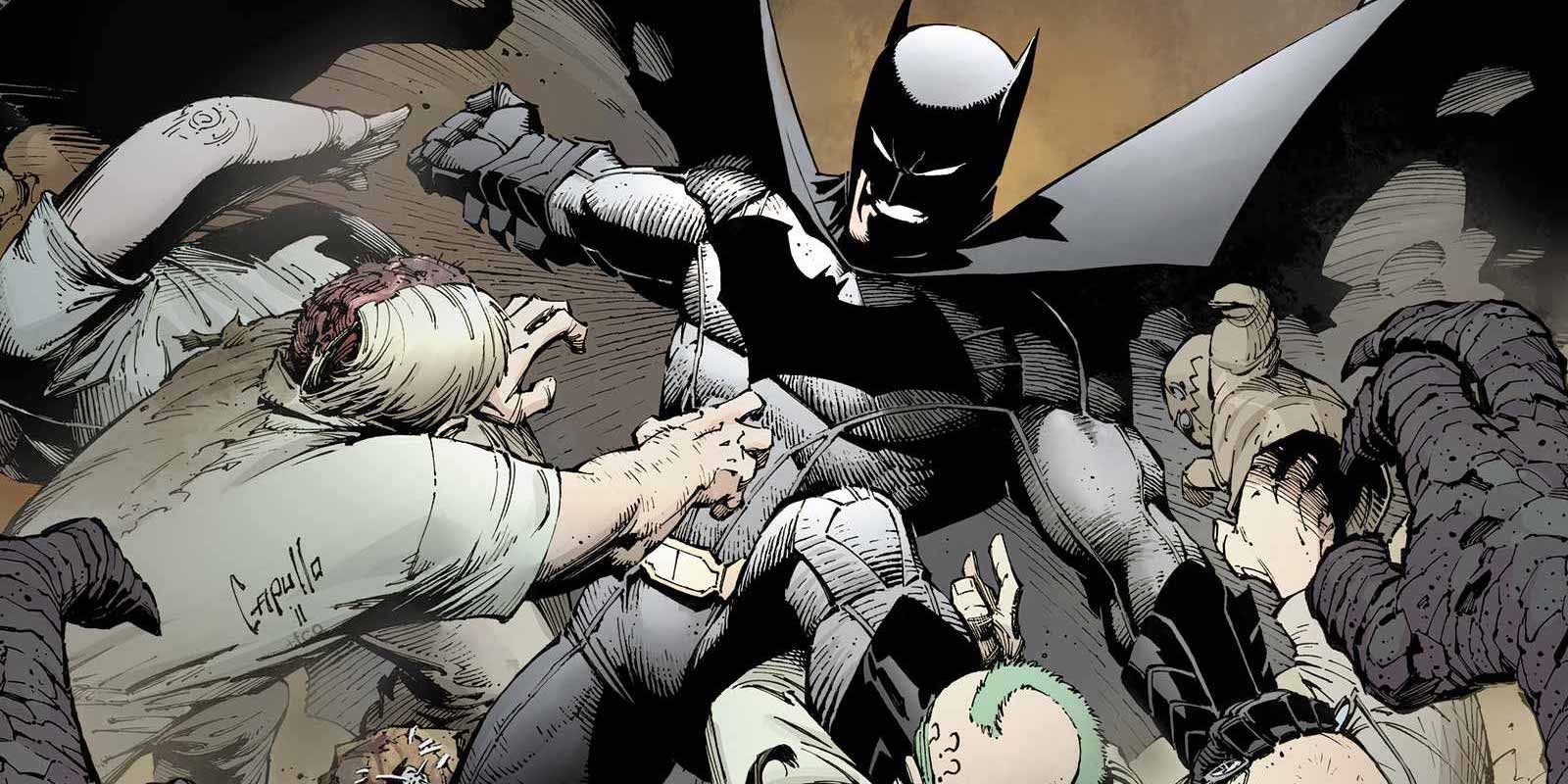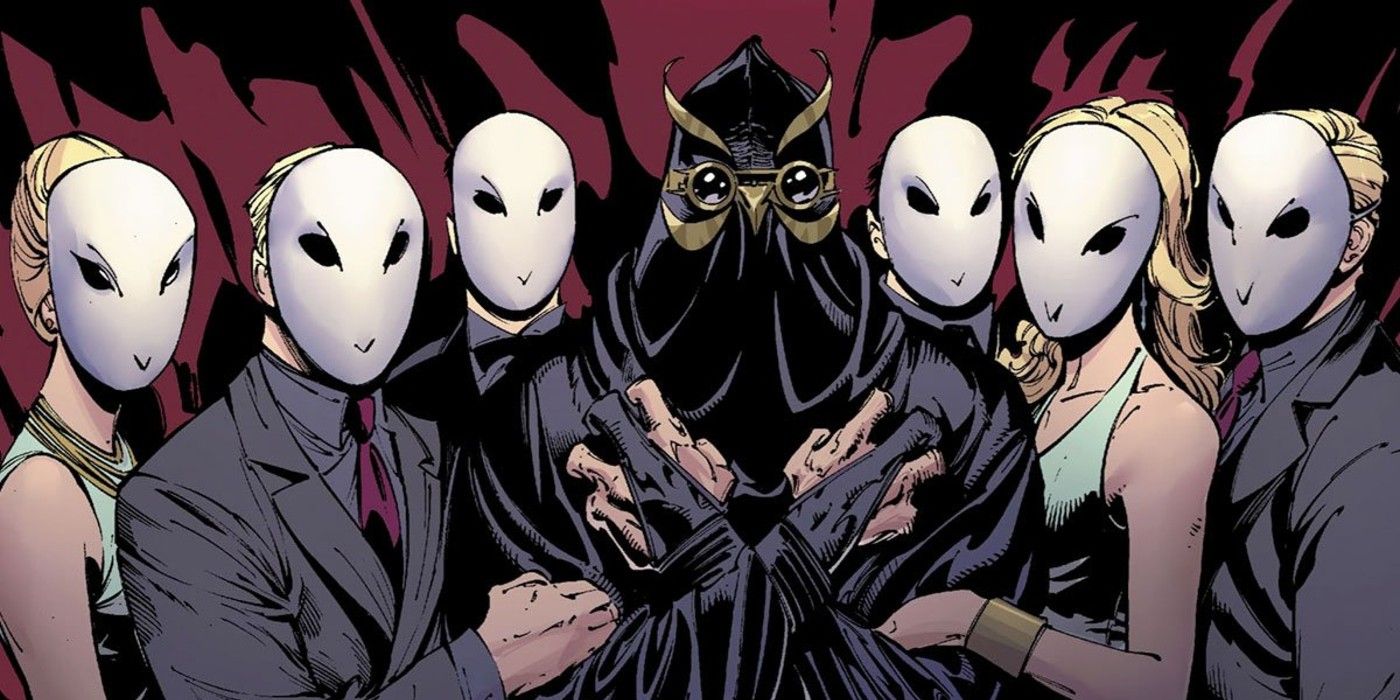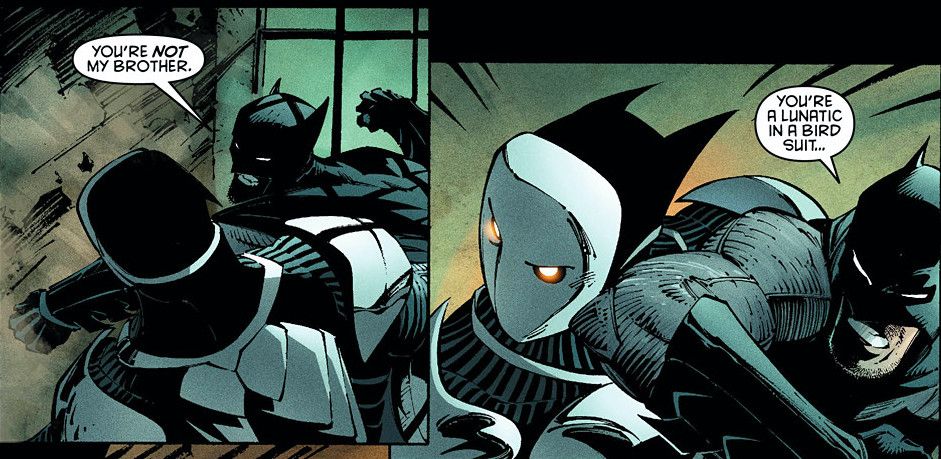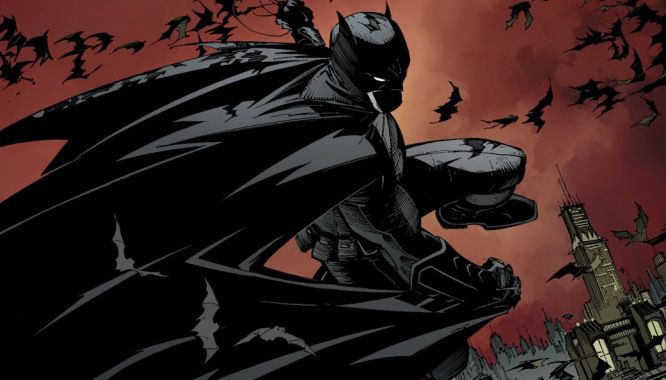The Court of Owls are unlike any other Batman villain. They are not escaped inmates from Arkham Asylum. They are not from the depths of Gotham's sewers. They do not even have names or any distinguishing features aside from the masks they wear. Instead, they are just like Bruce Wayne: wealthy socialites with enough power to transform Gotham however they choose.
In The Court of Owls saga (written by Scott Snyder, pencils by Greg Capullo, inking by Jonathan Glapion, colors by FCO Plascencia, Nathan Fairbairn, and Dave McCaig, letters by Richard Starkings, Jimmy Betancourt, Pat Brosseau, and Dezi Sienty), the Dark Knight goes up against the eponymous shadowy organization rumored to have ruled Gotham with an invisible hand for centuries after they try to assassinate him and mayoral candidate Lincoln March. Batman's pursuit of the truth about The Court of Owls unravels his whole understanding of his city as he learns that the Owls have as much a foothold in the very foundation of Gotham as his family does. This is further complicated when March himself is revealed to be one of the Owls' trained assassins, the Talon, operating under the alias Owlman. While the Waynes have sought to publicly build a more equitable Gotham for all citizens, the Owls have sought to thwart social progress wherever they can from their position in the shadows. In short, they are the direct antithesis to the Wayne family, a type of evil dopplegänger looming over Gotham.
The Court of Owls saga embodies the best aspects of Batman stories: a gothic exposé on the slimy underbelly of city politics.
Some of the most recognizable features of a Batman comic are a story about political corruption filled with gothic elements such as identity crises, insanity, evil twins, repression of past trauma, violence, and creepy derelict houses. The Court of Owls saga puts all of these things together in order to deliver a story with a distinctively gothic take on how political power is wielded in Gotham. It looks inwards at the core tenets of the Batman mythos - his devotion to his city, the death of his parents, the symbol of the bat itself - in order for Bruce Wayne to confront the more troubling aspects about his relationship with Gotham. In effect, The Court of Owls reveals the dark, unseen underside to everything that Bruce Wayne holds most dear: his family legacy and the city he calls home.
The saga offers a glimpse of what Batman might be like if he did not have such noble intentions to make Gotham a better place. This is a horrifying realization for both Bruce Wayne and the reader. Writer Scott Snyder carefully crafts an evil dopplegänger in the Talon, that Wayne must defeat in order for him to learn the dangers in equating him and his family legacy with Gotham itself. Instead, Bruce Wayne discovers that, "Gotham isn't Batman. Gotham isn't the Owls. Gotham is... Gotham is all of us."
Bruce Wayne's identification with bats is juxtaposed the Court's use of owls to represent their ideals.
The inherent conflict between Bruce Wayne and the Court is illustrated through the animal imagery that each party uses, advancing the Owls' characterization as the Wayne family's doppelganger. Bruce is empowered by the image of his childhood fear because it helps him embrace his inner darkness in order to make his city a better place. But The Court of Owls are a direct threat to the bat-like qualities of his alter ego because owls are natural predators of bats, which the Talon reminds him of each time they fight.
But aside from merely embodying a menacing appearance, the emphasis that the Owls place on being owls brings attention to the similarities between them and Bruce Wayne, while also highlighting their crucial differences. They are another flying, nocturnal animal that strikes both fear and awe, and as the Court demonstrates, has no problems with killing. Batman notably has a rule to never kill, but his rage can sometimes jeopardize this aspect of his moral code. Therefore, the Owls come to represent the dark side of Wayne's character, a version of himself that would be the case if he only gave himself over to his evil impulses.
However, beyond just the similarities between the animals they use to disguise themselves, Bruce Wayne bears striking resemblance to the Court's own Owlman, Lincoln March, in more ways than one. When the two meet at an event where Wayne announces his plans to invest money into revitalizing Gotham, the two are nearly indistinguishable in the same panel, with the exception of March being taller. As March reveals his support for Bruce's plans, as well as his own tragic background as an orphan, he comes across as an alternate version of Bruce Wayne, one that went into politics instead of philanthropy. The later development of March as Wayne's evil twin furthers the Owls' status as Batman's uncanny double.
The Owls test Batman's sanity like never before through revealing secrets about the Wayne family.
The best superhero stories are ones where a hero must remember why they are a hero in the first place. After losing sight of their goals as a superhero, they must rediscover what it is that compels them to live such a life of danger and confrontation. Often, this is a shortcut to understanding the very identity of a character to begin with.
The Court of Owls follows this exact character arc as Batman learns information that flips his understanding of his family history upside down. One of the most stable aspects of Bruce Wayne's identity is that he gets his care for the citizens of Gotham from his parents. The philanthropy work he does on behalf of the city is in the hopes of continuing where Martha and Thomas Wayne left off. But when Owlman claims to be Thomas Wayne Jr., the son that the Waynes had lost when he was born prematurely, Bruce's self-concept is disturbed at its very core. Owlman directly contradicts Batman's understanding of himself as the Wayne family guardian of Gotham.
Batman faces his evil double in his "brother," Owlman, in order to fight for his vision of Gotham's future.
As Bruce fights Owlman, he denies his enemy's claims of being his brother, calling him a "lunatic." To that, Owlman replies, "It's a story as old as man, Bruce. Two brothers. Sons of a fabled line. Like Romulus and Remus! Eteocles and Polynices! Bruce and Thomas, sons of Gotham. Meant to share the city! But one brother always gets greedy and takes it all in those stories, doesn't he?" Owlman draws similarities between the Owls and the Waynes in order to illustrate the dueling nature of power that both groups have had over the city. Neither of them can comfortably exist while the other continues to exist.
In fighting Owlman, Bruce learns that his singular perspective of Gotham belonging to him makes him hardly different than his enemy. Though the Waynes have shaped almost every aspect of Gotham, they are ultimately only one part of its story as a city, not its entirety. This offers a new take on Batman that imagines him not as the single, defining factor of the city he lives in, but a facet of a community much larger than himself. A city cannot be represented in the acts of only one of its citizens, as Bruce comes to realize.
In defeating the Owls, Bruce Wayne comes to terms with the forces that have shaped his life as Batman.
Heroes are only ever as good as the villains they must overcome, and this dynamic is especially impactful in The Court of Owls saga. Because the Owls are characterized in such a similar fashion to the Wayne family, special attention is brought to both Batman and Bruce Wayne's shortcomings. Beyond just wreaking psychological terror on him, the Owls present a villainous mirror image of the foundations of Batman's character. The problematic reality of Bruce's equation of himself with his city because he is a Wayne is made horrific when it is presented to him through his own evil twin in Owlman. Thus, the Owls provide Batman with a disturbing look at the kind of person he could easily become if he was not careful.
The Court of Owls is a story that could only be told as a Batman story, because it is rooted in the specificities of Batman lore. Instead of a foe that Batman can easily distance himself from, the Owls force Bruce Wayne to closely examine his values as both a superhero and a public figure in Gotham. Even though the journey nearly breaks him, both physically and psychologically, Bruce Wayne emerges as a stronger version of himself. In order to remain good, he must briefly immerse himself in evil.




